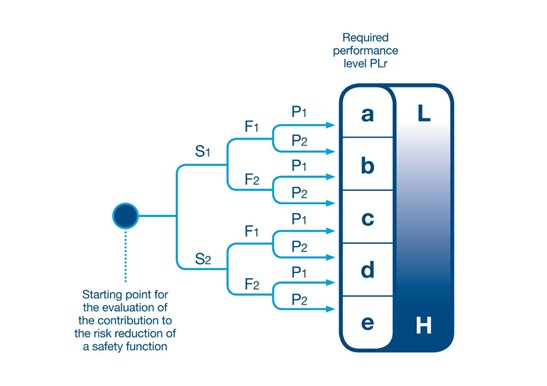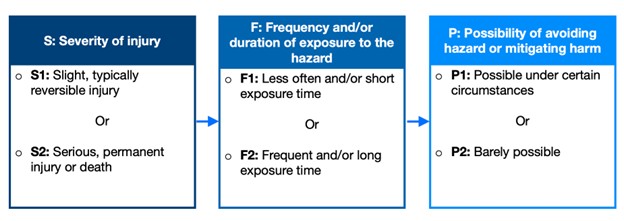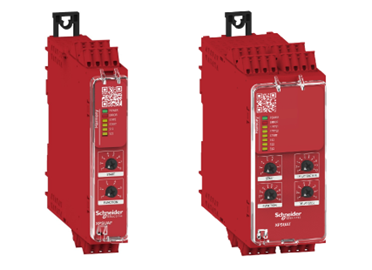Simplifying safety in modern automation
From packaging warehouses to CNC machining, the expanse of industrial automation is continuous, both covering a greater breadth of applications and delivering higher levels of performance.
But, with this continued growth comes several challenges. For high-precision engineering machinery, including CNC mills, laser cutters, and welding robots, these previously standalone systems are now often working in tandem with automatic parts loaders and conveyor belts to help increase productivity. Within packaging applications such as distribution warehouses and bottling plants, vast arrays of machinery not only have to work in harmony with each other but also with a sizable workforce. The requirement for greater and more complex coverage by automation, along with increased synergy with employees, creates an increased demand for the underlying safety systems.
Here, Mark Patrick, Director of Technical Content for EMEA at Mouser Electronics, and Chanakya Gupta, Sr. Offer Manager, Motion and Control at Schneider Electric, bring their expertise to the forefront in discussing the challenges and solutions in the field of industrial automation safety systems.
As automation in the industrial world has evolved, there has been a significant rise in the underlying safety systems complexity, with the number of unique components needed to build and maintain solutions increasing substantially. Consequently, the automation industry has a growing need for cost-effective technologies that can meet the latest safety requirements whilst simplifying design and maintenance tasks.
Rising automation and increased safety requirements
Whether in industrial assembly and electronic component manufacturing or distribution warehouses and bottling plants, the level of automation in a typical installation has significantly increased during the past few decades. For companies with substantial distribution requirements, such as Amazon or Walmart, large-scale automation is essentially the only way to keep up with demand.
For safety systems, this continued demand has created several challenges. For example, there are now more automations and robotics working in close vicinity of human employees, such as within packaging plants. This has increased the level of risk reduction needed, meaning more safety switches and functions are required, which increases the time and cost demands for both machine design and maintenance. Equally, with businesses so reliant on automation, it is important to minimise downtime and have systems which are easy to diagnose.
Perhaps the most significant consideration is the complexity of the automations and machinery. For any modern packaging facility, the operational output depends on machines such as vertical lift modules (VLMs), conveyor belts, pick and place machines, auto-loaders and labelling machines. Within these facilities, the machines will often be linked with continual processing from station to station.
The development of these vast interconnected automations has demanded advances in machine safety standards. The speed and power of such systems present an incredible risk to the surrounding workforce that must be controlled. Failure to meet these standards can lead to significant injury or death, as well as lost productivity, increased insurance premiums, and negative press.
ISO 13849-1 safety requirements
ISO 13849-1 is central to the safe design and installation of machinery. This standard specifies the methodology and requirements for the design and integration of the safety‐related parts of control systems (SRP/CS), including safety functions, relay modules, and control devices. Crucially, it also defines the framework for evaluating the required performance level (PL) for an application (Figure 1).

Figure 1: PL requirement workflow chart used to determine safety function requirements. (Source: Automation IT. Newsletter 15, No. 3 (September 2014). Redrawn by Mouser Electronics)
ISO 13849-1 sets five levels for PL, ranging from PLa—safety functions which contribute the lowest risk reduction—to PLe, safety functions which contribute the highest risk. The requirement is determined by resolving the workflow in Figure 1, with the steps defined in Figure 2.

Figure 2: Severity, frequency, and possibility steps for ISO 13849-1 PL requirement (Source: Mouser Electronics)
For many modern industrial automation systems, the number of moving parts and the speed and power of the machinery, combined with their continuous operation, mean that performance levels of (d) or (e) are nearly always required. Another important consideration is the safety device’s ISO 13849-1 architecture category. These range from B to Cat. 4, with B having the lowest function safety requirements, to Cat. 4, which features the highest function safety requirements.
Sophisticated control
The requirements of safety systems have grown with the increase in performance and spread of automation applications, resulting in more intricate designs, higher installation costs, and greater maintenance needs.
Within a typical high-volume distribution centre, there are countless pick-and-place machines, robotic arms, conveyor belts, and VLMs working in harmony. To ensure that employees are free from harm, PLe safety and Cat. 4 architecture are targeted if not required, with a vast number of safety functions needed to control operation. When safety functions are triggered, they will signal control systems to stop. Typical safety functions include emergency stop, antivalent contact, guard switch, magnetic switch, proximity safety switch, PNP sensor, RFID safety switch, safety light curtain, and two-hand control station.
Furthermore, the way safety systems must intervene has needed to advance. Historically, safety functions worked by halting machinery instantaneously. But as we have moved from simple lathes and textile weaves to high-performance assembly and packaging systems consisting of interconnected high-speed machinery, instantly stopping a process can be incredibly dangerous. With the sudden interrupting of high-speed machinery, products or parts can back up, leading to impacts or ejection, creating further hazards as well as increasing downtime as the situation must be resolved. For modern automation, safety functionality must have more intelligence, stopping machinery in a way that controls the initial risk, without creating further hazards or damaging products or equipment.
Typically, this requirement is fulfilled by vast networks of safety functions signalling relay modules pre-configured with specific thresholds and time delays, which, when combined with programmable logic controllers (PLCs), allows for the intelligent stopping of automation. The complexity of the safety electronics creates a significant cost, not just as an initial investment but also for the ongoing maintenance too; a typical distribution centre might require hundreds of safety modules with differing configurations to correctly relay the required safety functions signals.
For modern automation designers and production engineers alike, there is a real need for solutions which can simplify designs and maintenance tasks and reduce costs.
The universal solution
At present, many unique safety module designs are required to meet the demands of modern automations and robotics. This creates a significant time and financial cost, and it is here where innovative universal solutions can look to streamline the associated hardware.
As a manufacturer of solutions for the entire safety chain, Schneider Electric understands the need for the simplification of modern automation design and maintenance. Building off their previous Preventa lineup, the new Harmony XPS range consists of 50% fewer modules than before, with just two supply variants (24 VDC/AC and 48 to 240 VAC/DC). Despite the reduced number of models, Harmony XPS covers the same wide range of safety function applications as the Preventa lineup.
Harmony XPS universal functionality
Conventional safety relays are designed to meet the demands of a single safety-function application. For automation design engineers, this can be limiting and escalate system costs. For maintenance teams, it is extremely cumbersome to manage throughout the machine lifecycle, with teams needing to stock countless modules to ensure parts are covered in the event of failure. Resolving this fundamental issue, the Harmony XPS Universal safety modules (Figure 3) are configurable via a function selector dial on the front panel. This allows a single module to address a range of safety function applications.

Figure 3: The 22.5mm-wide XPSUAF and the 45mm-wide XPSUAT modules, both featuring a front panel function selector. (Source Schneider Electric)
The XPS Universal modules feature up to six safety function applications. This allows for support of safety functions ranging from monitoring electro-sensitive protective equipment, including Type 4 light curtains, to monitoring electrical or magnetic switched guarding per ISO 14119/14120. Using Harmony XPS Universal parts drastically reduces the number of unique modules that must be stocked, which lowers costs and removes complexity from a maintenance team’s workload.
Advanced diagnostics and time delay
Helping to simplify both machine maintenance and operation, Harmony XPS Universal delivers additional intelligence, supporting error diagnostics without additional fieldbus wiring. The smart auxiliary solid-state output provides any PLC with a digital input, with separate pulse patterns for status and diagnostics information, supporting 40 unique messages. The diagnostics messages can then be displayed on a compatible human-machine interface (HMI), enabling greater insight into a machine’s status and aiding root-cause analysis, thereby reducing investigation times and operational costs.
It is also possible to read a detailed status indication from all Harmony XPS Universal range modules and provide status indication of proof test interval and the number of operations for both input and output devices and the safety module.
For safety systems in large, interconnected automations that require timed intervention, the XPSUAT and XPSBAT models feature a configurable time delay ranging from 0 to 15 minutes. This feature can be easily accessed through the front panel dial, with a removable transparent front cover and uniquely numbered sealing strip to prevent adjustment.
Comprehensive specification
Schneider Electric has added several design features to the Harmony XPS range to increase the ease of operation. This includes a front-facing QR code that goes to an instruction sheet, terminal layout, and wiring diagram; a side connector for output extension without additional hard-wiring; and LED indicators to enable easy reference in dusty or low-light conditions. The detachable screw and spring terminal also allow for easy setup and replacement without rewiring.
To speed machine development and time to market, the modules feature ready-to-use certified architecture and provide support for safety levels up to PLe, Cat. 4, and SILCL3, helping engineers to meet the latest automation safety standards.
Conclusion
Automation is revolutionising industry, creating new levels of efficiency; but even in the most autonomous facilities, emergency systems are always needed and their intelligence and effectiveness must match the systems they monitor. In systems where employees and high-performance machinery operate side by side for long durations, these considerations are even more important.
For design engineers and maintenance teams, the progressive rise in automation, combined with the safety requirements and operational value of the systems, has significantly increased the workload and costs associated with the safety control electronics. While advancements in PLCs and HMIs have helped to mitigate some of these issues, the vast complexity of the underlying hardware has remained, with large-scale automations reliant on a huge number of safety modules to relay critical signals.
The Harmony XPS Universal range has allowed Schneider to significantly shrink their product lineup and will allow customers to do the same. For designers, this can help to simplify development, while for maintenance teams, it can significantly reduce time and costs. Combined with advanced diagnostics features certified architecture; and PLe, Cat. 4, and SILCL3 support; the product range is making it simpler for engineers to meet the most demanding requirements, providing the automation industry with the safe and cost-effective solutions it needs to continue with its expansion.







